I'm going to talk about event tracking and how ITP affects this and what can we do against it.
Traditional tracking is called client-side tracking because it happens in the client's browser or the user's browser. It is an execution of some JavaScript which sets the cookies and then makes a pixel request and in this pixel request, we encode all the information we want to track. To make it a bit less abstract, here we have now the web browser. Usually the JavaScript is not hardcoded within the site, but we use the Tag Manager, most of the cases GTM, the Google Tag Manager. There all the JavaScript is hosted and this also makes sure that it's executed. This sets the cookie, this reads the data layer and then makes a pixel request to the tracking domain. The tracking domain in case of Google Analytics, for example, it's Google.com slash collect which is not the smartest and quite easy to identify as tracking. Most of the cases, we want this tracking really integrated in the site so that you have your own tracking domain. For information, it doesn't need to be a pixel tracking, it can also be a post request which contains this data, but the pixel tracking is the more older and most known.
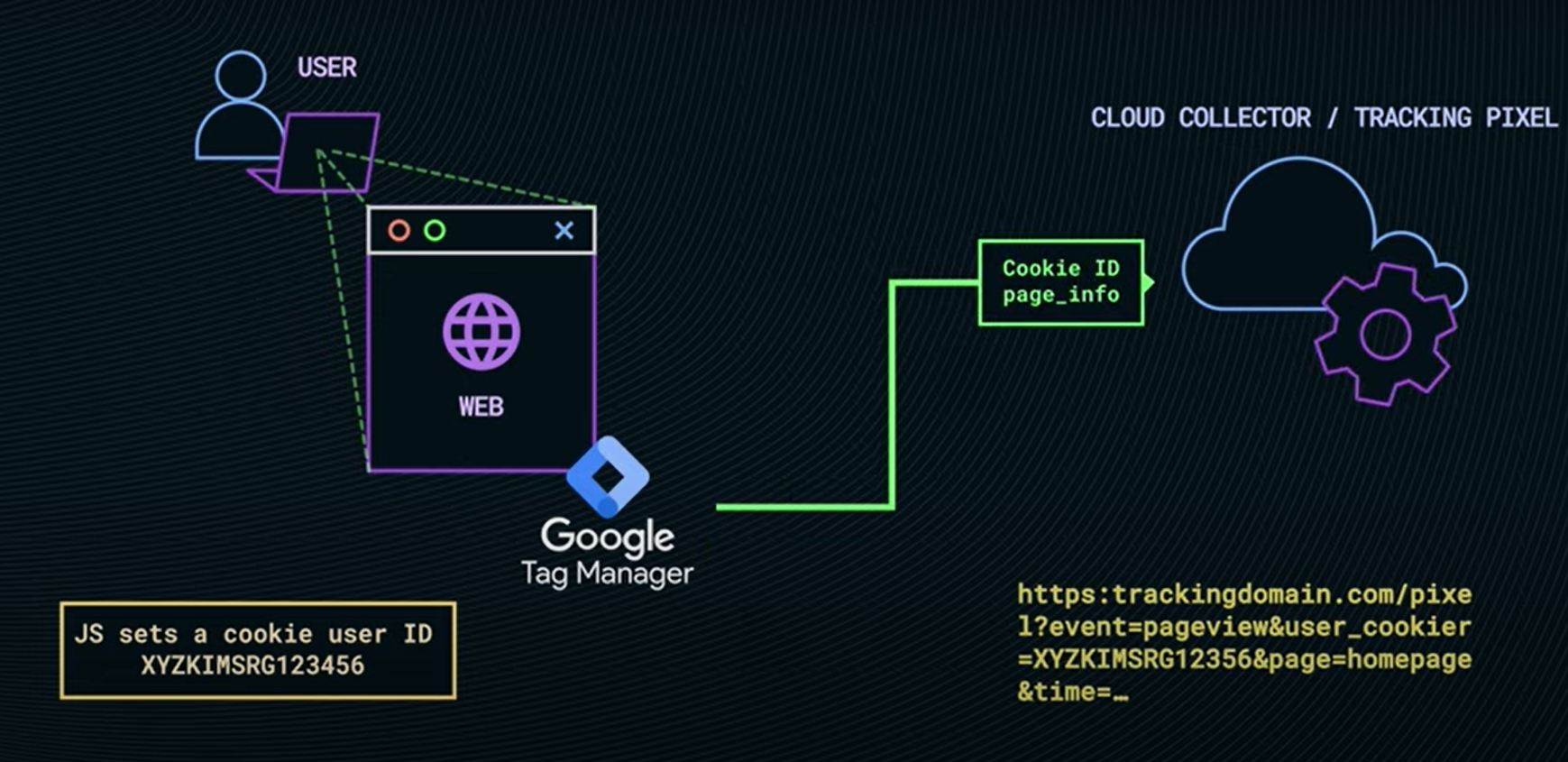
What can actually make client-side tracking unreliable?
Actually ITP, mainly in iOS or macOS systems, I will come in the next slide what actually really happens there, but it's not the only thing which can make it unreliable. Also ad blockers or tracking blockers can stop the execution of the JavaScript so that nothing is tracked. Also something is like breaking in the browser, can be, or if a visitor leaves the site very fast before the JavaScript is executed, it can also happen that we cannot execute a tracking.
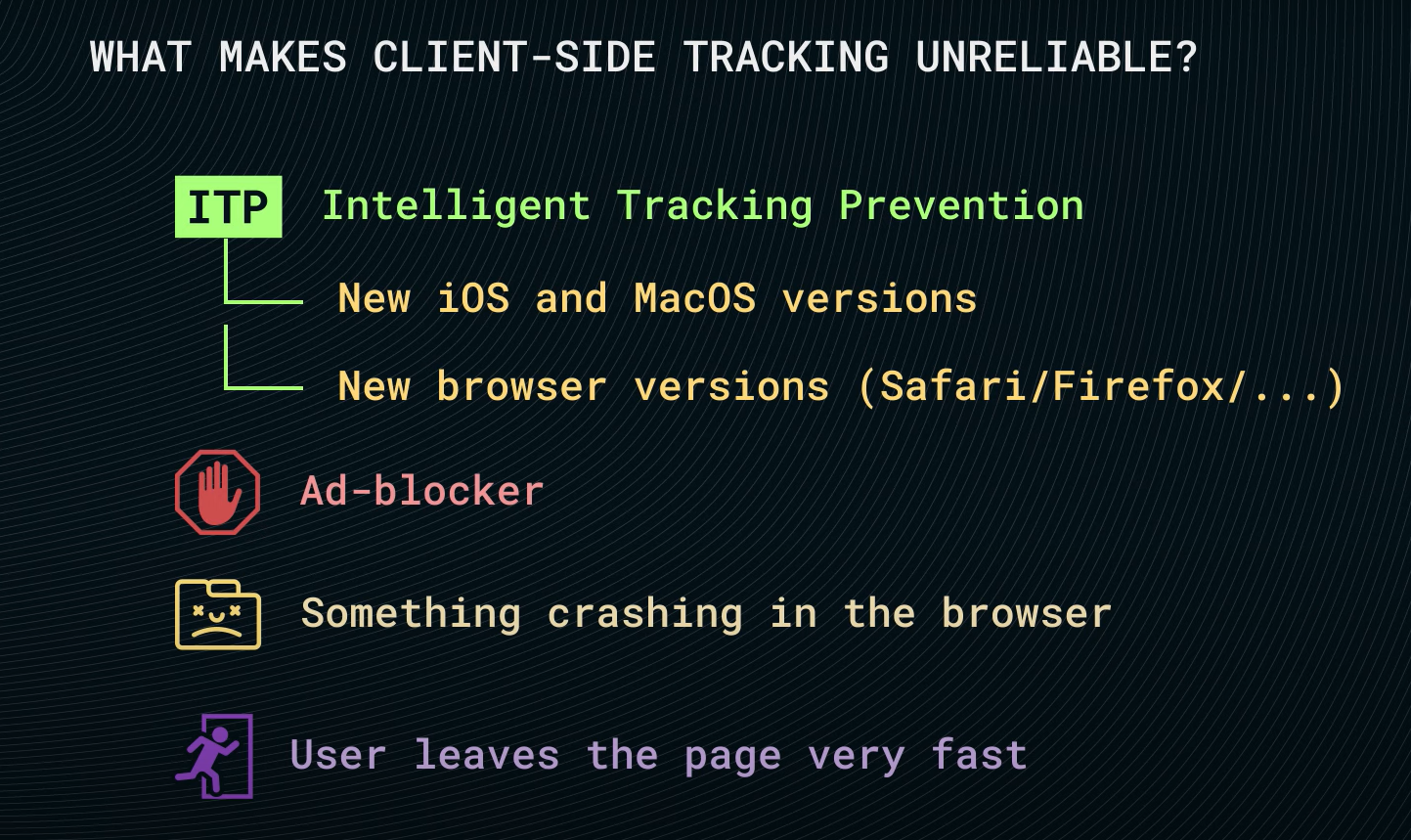
What is actually ITP doing in the tracking?
ITP is not really stopping the tracking or preventing it, it is refreshing the cookies. So we see when we look at the stats or so, when we compare for clients where like a server-side and client-side tracking is implemented, that only a small percentage, there is no tracking and these are ad blockers.
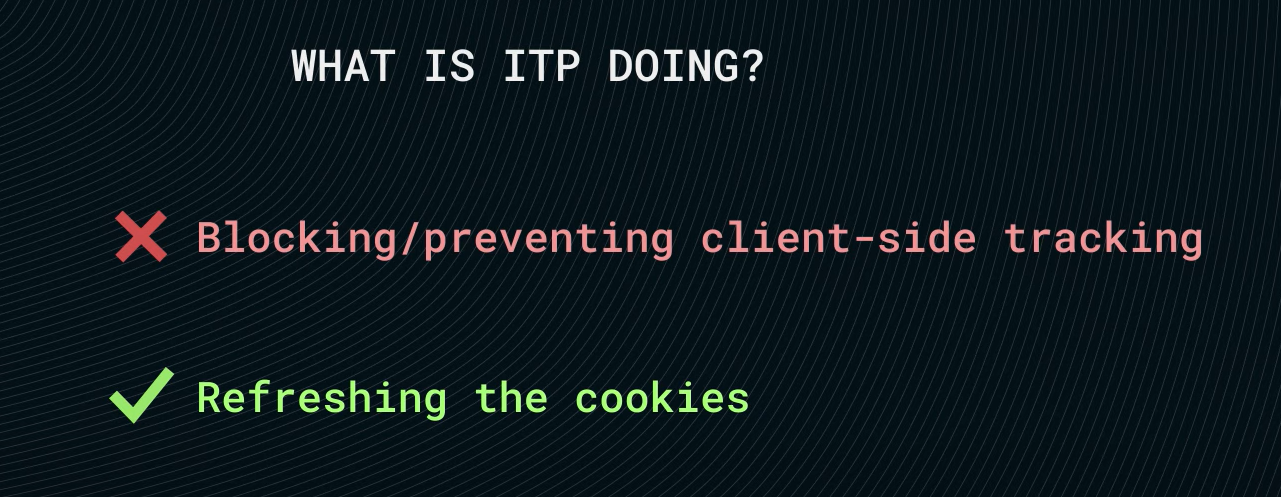
Most of the cases what we see in ITP is that the cookies are forced refreshed, which means on Monday someone visits the website and the cookie is set and this comes into the tracking. On Tuesday ITP deletes this cookie from the browser and on Wednesday the customer comes back on the website, but now a new cookie will be set. So in the tracking the same user is seen with two different cookies.

What does it mean actually from the data analyst perspective?
Before we could understand the customer journeys in the connection of sessions. For example here we have a customer journey with three sessions with three different channels. First the customer comes via like a social paid campaign to the website, then via search engine marketing campaign and in the third session the customer knows already that he want to buy something with us and he comes via direct, for example a bookmark and makes an order. Now in terms of ITP it can happen that we still track all the sessions, but we cannot connect all the sessions to the same underlying user because we see all the three sessions with three different user IDs and therefore we only retract that the order which happens or the conversion via direct and we think it was only a direct touch point. That's why with the rollout of ITP you see more value within like the direct channel or say a brand channels, but this is not because the channels are stronger, that is merely because the connection between the sessions in the customer journeys is lost.
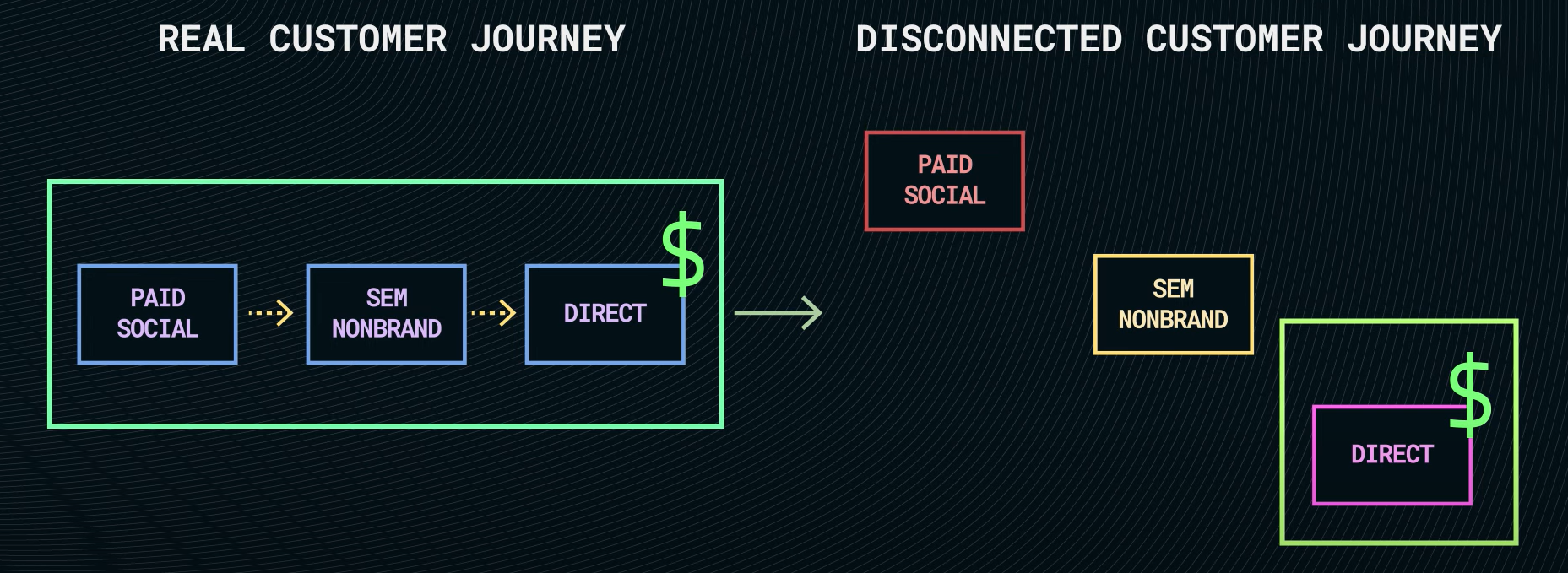
But that is not the end of the story. We can use server side tracking to make our tracking and data collection more reliable. Every time when a page is loaded in a browser there is a connection with the web server and we can add some tracking directly from the web server to the tracking pixel to the data collection and therefore we can increase the reliability of our data because this server side tracking is not affected by ITP. Okay to explain a bit more in detail. So we have the browser where the user loads the page and we have the web server and between both of them we have the connection via the TCP IEP protocol and this exchange information. Then we have in the browser we have a GTM and we have client side tracking and we have from the web server also a tracking directly into the cloud collector. Both have its pros and its cons. In the client side tracking from the browser we can like as I explained before be affected by ITP because the tracking can be prevented or most of the cases that cookies are refreshed. But we have the advantage that we can track all the on-site events. So every time on the website they stay on the same page they are on-site events and these not necessarily are connected with some web server communication. So these can only be tracked with the client side tracking. On the other hand the server side tracking is very good because it cannot be touched by ITP. So here we can track the return user better but we are losing that we cannot track any on-site events. So that's why we always recommend to have both in place the client side tracking to understand what's happening within the page view and more details of the user's engagement and the server side tracking to see the same user coming back over multiple days and weeks. So but actually how do you do this? So now we have like two ways of tracking the events from the same user and we use this by the exchange of information between the web browser and the web server. Because here we can push the user ID from the server down to the browser and we can also push the cookie ID from the browser to the server. Hence we can track both IDs. And that is kind of like usually not happening in the first event but after the second or third page view we usually also had a chance in the server side tracking to track the client customer as a client cookie ID and in the client side tracking we had from the first or second page view often also a chance to track the server side user ID. So at some point we have a handshake of the IDs. In the data analytics when we touch the data in the ETL processing we can know that both events actually from server side and client side come from the same user. And hence we can build strong customer journeys for any kind of analysis like an engagement analysis, attribution analysis, etc.
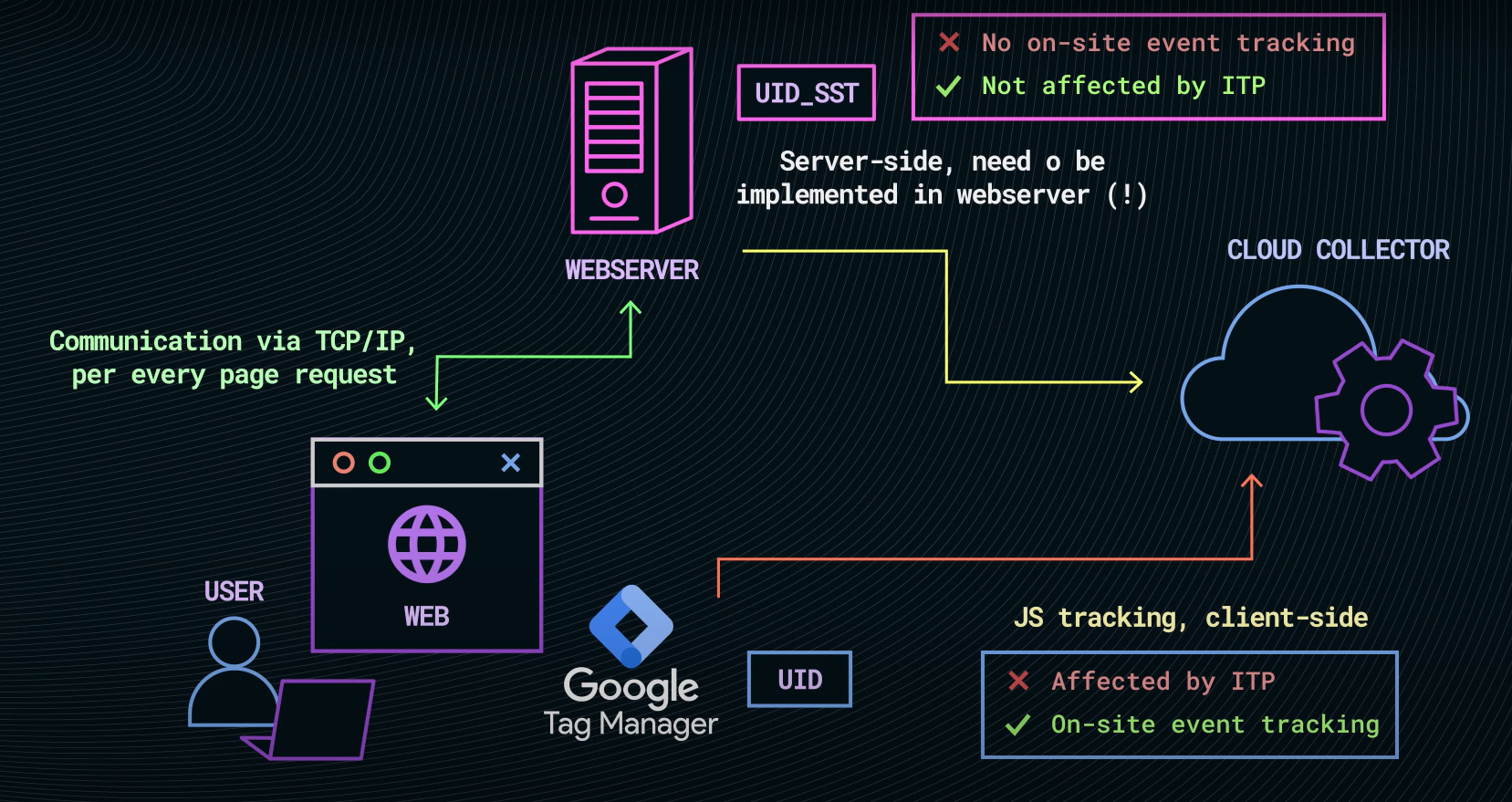
I explained how ITP is affecting the event tracking and what can we do about it. Tools like Omnitrack using server side tracking which can also help us a lot to improve the tracking and it's easier to implement normal server side tracking.